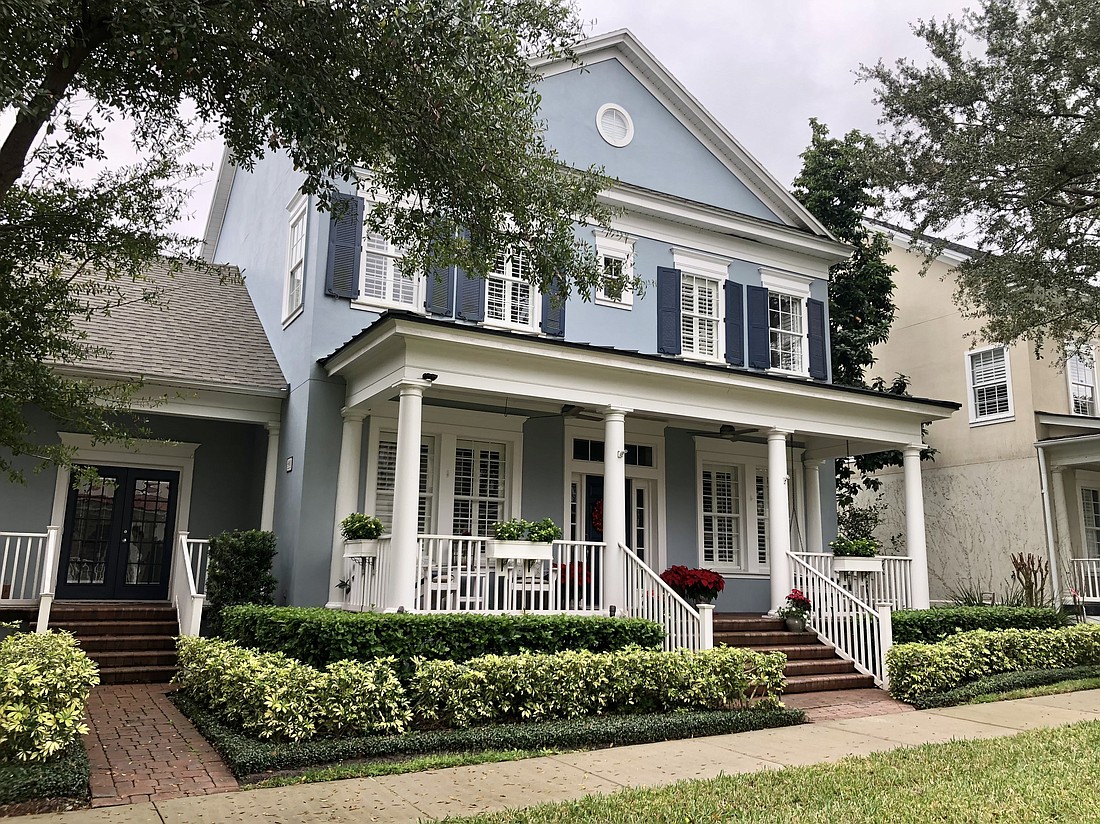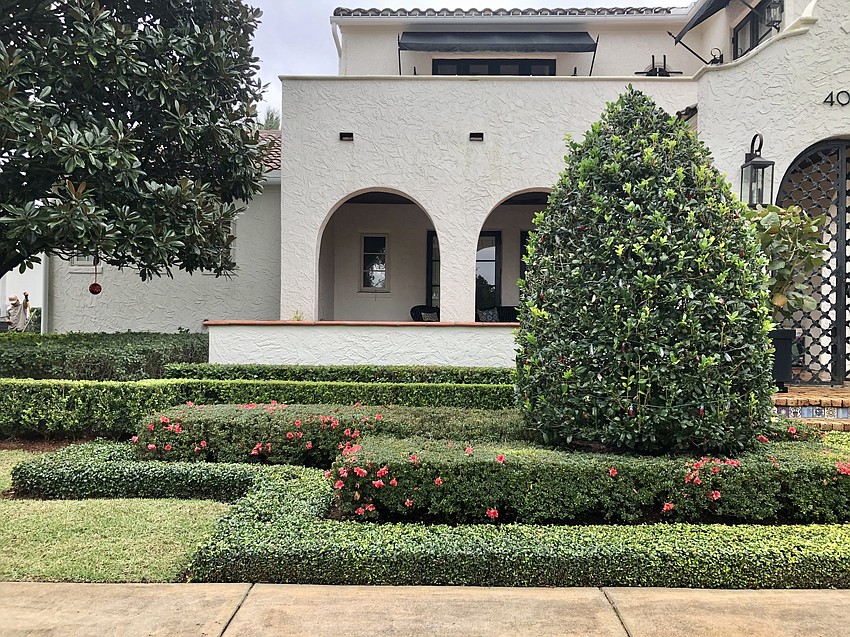- July 26, 2024
-
-
Loading

Loading

Winter is formal season, at least in Chicago, where I lived for a few decades. ‘Tis the season to don a gown or dust off the tux to attend a charity gala or two.
As an architect and landscape designer, this is also a time when my attention turns to the front yards of Baldwin Park. Front yards here are defined by formal order, reminiscent of the discipline required of cadets and recruits who endured military life at our former Navy base. Hedges are kept neat and trimmed, porch railings are polished, and plants are placed in rows of descending hierarchy, as if to stand at attention to salute an officer passing by.

Best Foot Forward
From a design perspective, the front yard is akin to a handshake or formal greeting. First impressions are made quickly that set the tone for future interactions. Realtors refer to this phenomenon as curb appeal, but in pedestrian-friendly Baldwin Park, I like to call it “Sidewalk Style.” In other words, this is a place for homeowners to show their most put-together side of themselves.
Slow Down and Enjoy the Show
Relatively smaller lots combined with slower-moving traffic — both vehicular and on foot — shift the way we perceive our front yards compared to other communities. Details count more when our eyes have more time to scan what is in front of us. This impacts not only the need for careful consideration of plant selection and placement but also regular and proper maintenance. For example, blooms of a flowering ixora might be more appreciated 3 feet from a sidewalk on Penway Drive compared to 50 feet off Semoran Boulevard at 50 mph. At the same time, weeds and other imperfections can become more visible in these close-up situations.
A Hallmark Architectural Element
Baldwin Park is often characterized by one distinctive architectural feature — the front porch. Conjoining the main body of the home with the front yard, it serves as both a private living space and a pre-foyer lobby to receive packages and the public. Whether small or large, there is usually room for outdoor seating, potted plants, lighting, paving and seasonal décor — beckoning neighbors, showcasing personality, building community and even enhancing the security of our streets. A key part of the front yard presentation, the front porch is at the intersection of both landscape and interior design.
The Front Yard Defined
Here in Baldwin Park, the “front yard” is generally considered to be the part of a property between the front door plane (or façade) and the front-most property line (or sidewalk). This is typical only and can depend on the configuration of a home and lot. According to the Baldwin Park Residential Design Guidelines, section 3.2.1, like the front porch, the front yard “serves as a transition between the public realm and the private environment of the homeowner. The yard also helps to create an edge to the pedestrian environment in the public realm [correction made to word order].”
The Case of the Corner Lot
This section of the guidelines delineates other “yards,” such as side yards, alley yards and private zones. Note that for properties located on corners, side yards facing the street must meet the same requirements as front yards.
Compulsory Components
The guidelines list required landscape elements in each yard for a given “lot type.” Single-family home lot types are listed here from largest to smallest: custom, manor, village, park, cottage and bungalow. Look up your lot type in the guidelines or call the HOA office.

Trees
Trees are categorized as larger canopy trees that provide shade (examples include live oaks and red maples), and smaller, more ornamental accent trees (examples include crepe myrtle and eugenia). Larger lot types must have larger trees than smaller lot types. For instance, front yards of custom lots along New Broad Street generally must have a minimum of two canopy trees and two accent trees, whereas front yards of bungalow lots along Almond Avenue must have a minimum of two accent trees. Smaller yard depths limit the safe spread of roots.
Shrubs
There are several requirements around shrubs. The first is a coverage minimum, meaning that a front yard must contain enough shrubs to cover a percentage of the total gross area of the front yard. The second involves massing and layering. At least some of the shrubs should be planted in linear groupings (or hedges) to form continuous lines that “accentuate the architectural form of the home and enhance its entrance.” Hedges must also be placed to form vertically layered tiering, just like sailors standing in formation. Popular hedging shrubs include podocarpus and viburnum.
Ground Cover and Turf
Minimum coverage percentages apply to ground cover, the lowest of the layering tiers. And requirements for turf (or sod), which is not considered a tiering material, are stated as a maximum allowed area. Commonly used ground covers are asiatic jasmine and mondo grass.
Apply for Changes
Here is another gentle reminder that all changes to the exterior of your home and property must be approved by the HOA’s Architectural Review Committee, and although I have served on that committee and have a familiarity with the guidelines, approval by the current committee based on their interpretation of the guidelines is necessary prior to making any changes.
If you are feeling formal this February, perhaps it is time to venture out to tour the front yards of Baldwin Park with your newfound knowledge of their design considerations. And, we won’t be surprised to see you in black-tie attire.
Mimi Simmons is the owner of Mimi Simmons Design.